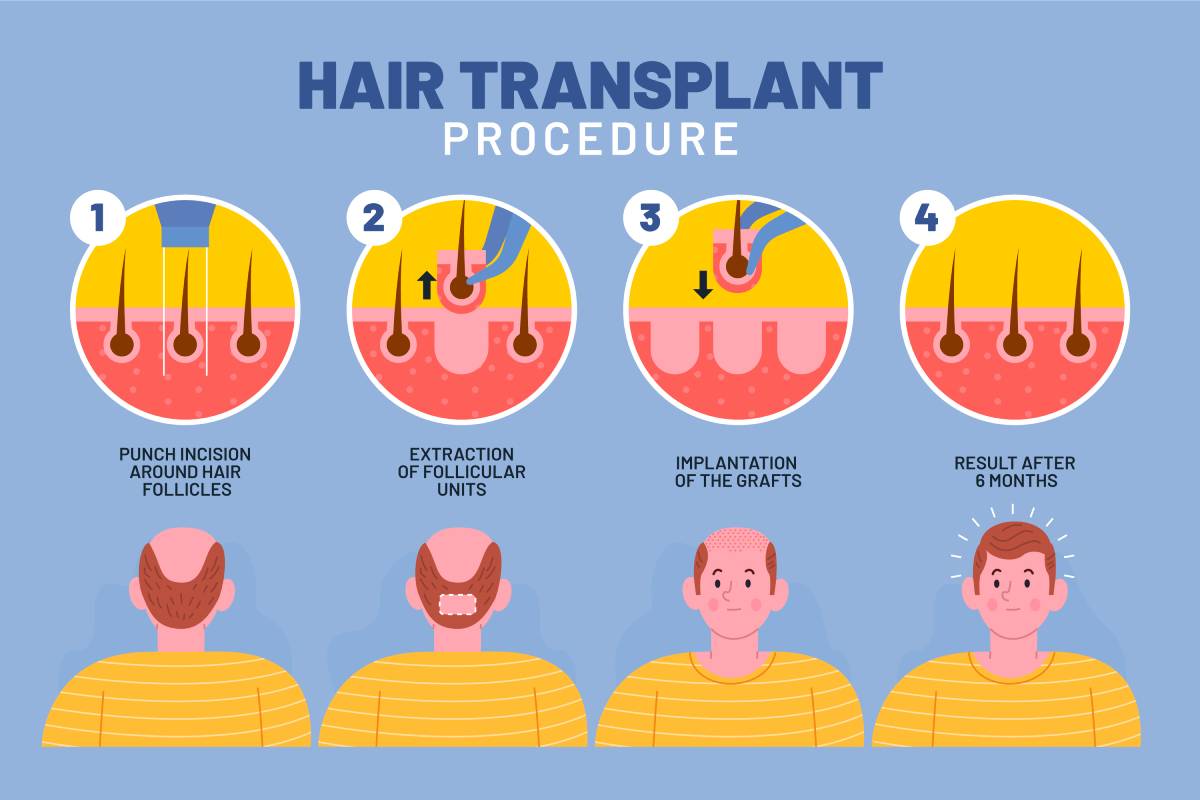
Hair Transplant Surgery: A Simple Guide to Restoring Your Hair
Hair loss is a common concern for many people, and it can affect self-esteem and confidence. Whether it’s due to genetics, aging, or other factors, thinning hair or bald spots can be distressing. Thankfully, hair transplant surgery offers a solution to restore hair and help people feel more comfortable with their appearance.
What is a Hair Transplant?
A hair transplant is a surgical procedure in which hair follicles from one part of the body (usually the back or sides of the scalp, where hair is more resistant to balding) are moved to areas with thinning or no hair. The goal is to provide a fuller, natural-looking head of hair by redistributing healthy hair follicles to areas that need them.
How Does a Hair Transplant Work?
Hair transplant surgery involves two main techniques:
- FUT (Follicular Unit Transplantation) -
In this method, a strip of scalp with healthy hair is removed from the back of the head. The hair follicles are then carefully separated from the strip of skin and transplanted to the bald or thinning areas. - FUE (Follicular Unit Extraction) –
FUE is a less invasive method. Individual hair follicles are extracted directly from the donor area (usually the back of the scalp) and then transplanted to the recipient area. This method leaves tiny, less noticeable scars and usually has a quicker recovery time.
Both methods are designed to ensure that the hair grows naturally in the transplanted areas, blending in seamlessly with the surrounding hair.
Who is a Good Candidate for Hair Transplant Surgery?
Not everyone is a good candidate for a hair transplant, but most people who have thinning or bald areas on their scalp can benefit from the procedure. The best candidates usually:
- Have areas of the scalp that are bald or thinning, but still have healthy hair growth in other areas (typically the back of the head).
- Are in good overall health.
- Are realistic about the results and expectations of the surgery.
A consultation with a qualified hair transplant surgeon can help determine whether the procedure is right for you.
Benefits of Hair Transplant Surgery
- Permanent Results: Once the transplanted hair follicles begin to grow, they are typically permanent, as they come from areas of the scalp that are resistant to balding.
- Natural Appearance: With proper technique, hair transplants can look very natural, with hair growing in a way that mimics the patient’s original hairline.
- Boost in Confidence:For many, the restoration of their hair can lead to a significant increase in self-esteem and overall confidence.
What to Expect After Surgery
After the surgery, there may be some redness, swelling, and mild discomfort, but these symptoms typically subside within a few days. Most people can return to work and regular activities within a week, though it’s important to follow post-surgery instructions from your doctor for optimal healing.
Hair growth usually starts within 3 to 4 months after the transplant, and full results are often seen after 9 to 12 months.
Conclusion
Hair transplant surgery has become a safe, effective way to restore hair for those experiencing hair loss. With modern techniques like FUE and FUT, patients can expect natural-looking, long-lasting results. If you're considering a hair transplant, it’s essential to consult with a skilled, experienced surgeon who can guide you through the process and help you achieve the best results.



